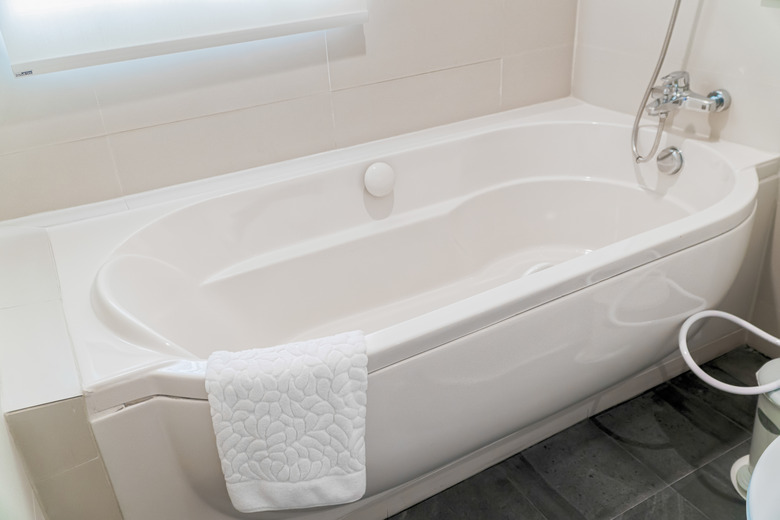How To Remove Rusted Overflow Drain Screws
Overflow drains are an important feature in bathtubs and sinks. They are openings designed to prevent flooding by redirecting extra water back into drainpipes after certain levels are reached. At times, the overflow drain screws may rust, however, which could lead to rust deposits in the sink or tub. Fortunately, replacement is fairly straightforward.
Preparing to Repair Overflow Drains
Bathtub overflow drains are usually located under the faucet. They may have covers that are held in place with screws. Standard sink overflows can be situated under or on the backsides of sink basins. They divert the extra water into your home's drainpipes, and they do not use screws.
When bathtub overflow drain screws get rusted, they need to be removed and then replaced. The first step is to look at the screw heads and match them up with the right screwdriver, preferably one with a long handle to aid in access. There are several methods for removing rusted overflow drain screws, and the other tools you need depend on how you approach the project.
Loosening the Screws
For this repair method, you will also need a rag, penetrating lubricant and a rubber band. Use the rag to clean off mildew or mold that may have accumulated on the drain's surface and dry it well. Get the lubricant, spray the screws and let it sit for about five to 10 minutes.
Use the screwdriver to insert the first screw. Apply pressure with one hand and use the other to rotate the screwdriver counterclockwise. If the screw head starts to strip (meaning its slots have deteriorated and the screw cannot be turned), after it is loosened, place a rubber band or other narrow piece of rubber in between the screwdriver and screw head. If this does not help loosen the screws further, you will need to try another method.
Additional Options for Removing Screws
You can try inserting a hacksaw blade into the drain opening, then press it up against the screws that are on the back of the drain cap. Saw slowly and carefully to avoid scratching the tub.
Alternatively, try to chisel and chip out some wood that is around the screw head. Once you do this, you may be able to grab onto the screw head with a pair of locking pliers. Then, you might be able to turn the screw.
A drill may work better than a screwdriver since it applies more force. You will need to wear safety glasses to protect your eyes and use the right drill bit and a screw extractor, both of which will likely come with your drill set. Attach the bit onto the drill and drill into the middle of the rusted screw. Then, place the extractor screws into that hole and drill counterclockwise for a second or two.
Preventing Rust on Drain Screws
Rust is a chemical process that occurs when oxygen and moisture come into contact with iron over time. You may be able to prevent your drain screws from becoming rusted by finding ways to protect them from moisture. This can be achieved through the use of sealants and protective coatings like Rust-Oleum.
You can also buy rust-resistant screws to replace the corroded ones; stainless steel is thought to have more rust resistance than other metals. It is also recommended to check and seal the overflow drain screws on a regular basis. You should also clean them regularly.
